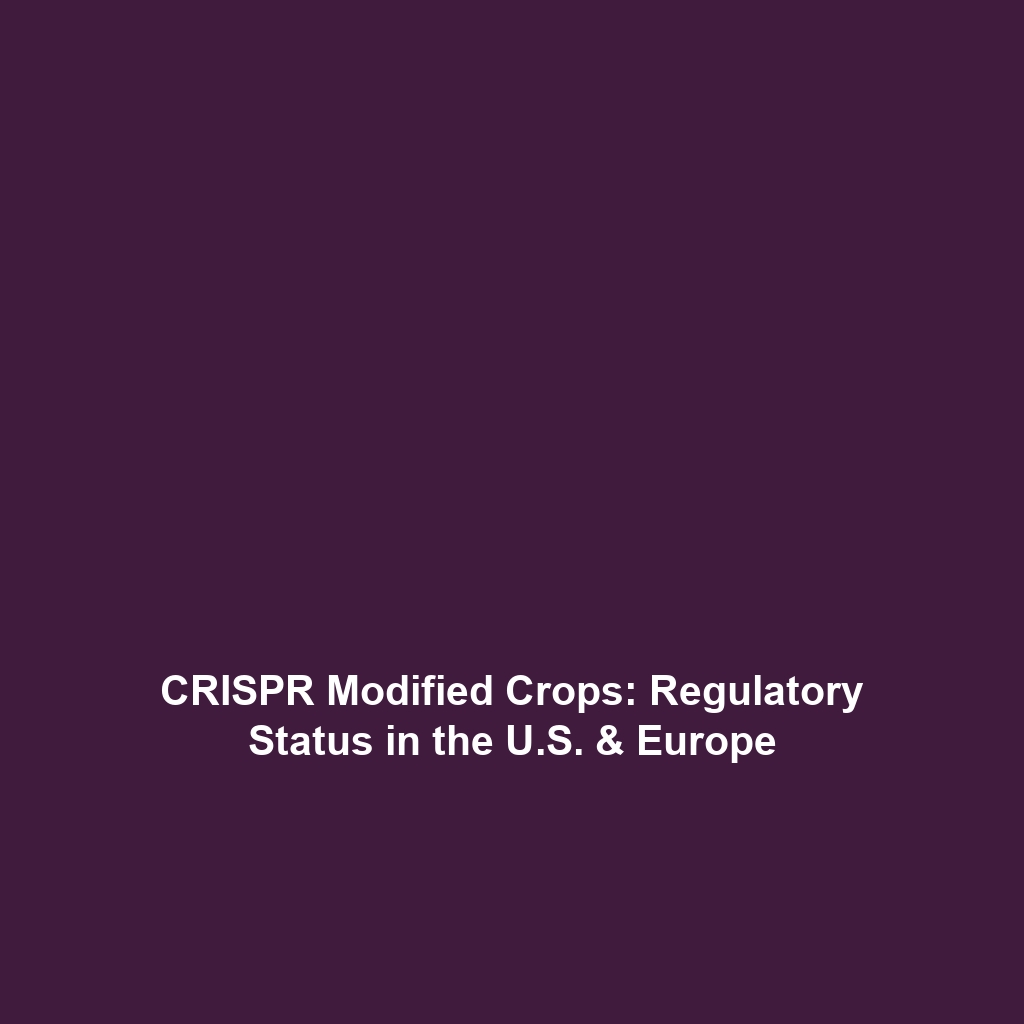The Role of Governmental Bodies in Regulating CRISPR Use in Agriculture and Medicine
The regulation of CRISPR gene editing technology is a pivotal issue for both agriculture and medicine, as it presents unprecedented opportunities for enhancing food security and addressing health concerns. Governmental bodies play a crucial role in overseeing the ethical use of CRISPR technologies, ensuring safety standards, and establishing legal frameworks. This article delves into the significance of governmental regulation, its key concepts, real-world applications, current challenges, and future innovations related to CRISPR Gene Editing.
Key Concepts of CRISPR Regulation
Governmental bodies are tasked with developing guidelines and regulations that govern the safe and effective use of CRISPR gene editing in various sectors. Key concepts include:
- Regulatory Frameworks: Establishing legal guidelines that outline permissible uses of CRISPR.
- Safety Assessments: Evaluating the potential risks associated with CRISPR technology in agriculture and medicine.
- Ethics Committees: Formulating ethical standards for gene editing practices and research.
Understanding these principles is essential for navigating the complex landscape of CRISPR Gene Editing regulation.
Applications and Real-World Uses
The role of governmental bodies in regulating CRISPR is particularly significant in ensuring that the technology is applied safely and effectively in both agriculture and medicine. Key applications include:
- Agricultural Bioengineering: Regulatory oversight of genetically modified crops that utilize CRISPR for improved yield and pest resistance.
- Medical Innovations: Guidelines for clinical trials involving CRISPR-based therapies for genetic disorders.
These applications highlight how governmental regulation is essential for integrating CRISPR technology into practical uses in agriculture and medicine.
Current Challenges
Despite the advancement of CRISPR technology, several challenges exist regarding its regulation by governmental bodies:
- Regulatory Uncertainty: Inconsistent regulations across different countries hinder global collaboration.
- Public Perception: Concerns about the ethical implications of gene editing impact policy-making.
- Technological Pace: The rapid evolution of CRISPR technology can outpace existing regulations.
Addressing these challenges is crucial for fostering responsible innovation in CRISPR Gene Editing.
Future Research and Innovations
As CRISPR technology continues to advance, future research will focus on:
- Next-Generation Gene Editing: Innovations in CRISPR techniques that increase precision and reduce off-target effects.
- Policy Development: Ongoing adjustments to regulatory frameworks that accommodate emerging technologies.
- Cross-Jurisdictional Collaboration: Efforts to harmonize regulations globally, promoting best practices.
These areas of focus will shape the future landscape of CRISPR Gene Editing regulation.
Conclusion
The role of governmental bodies in regulating CRISPR use in agriculture and medicine is vital for ensuring that this transformative technology is applied ethically and safely. Continued engagement from regulatory agencies, scientists, and the public is necessary to navigate the complexities of CRISPR Gene Editing. For those interested, further reading on the implications of gene editing regulations can be found in our related articles on agricultural regulations and medical applications of CRISPR.









